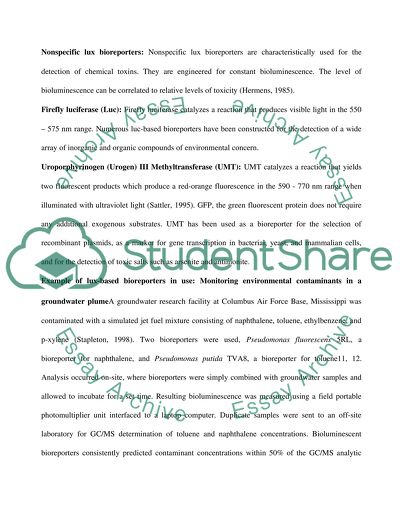Cite this document
(“Critically evaluate the potential applications for Essay”, n.d.)
Critically evaluate the potential applications for Essay. Retrieved from https://studentshare.org/miscellaneous/1561176-critically-evaluate-the-potential-applications-for-bioluminescent-based-biosensors-and-immunoassays-in-environmental-monitoring-discuss-using-specific-examples-the-benefits-and-shortcomings-of-these-technologies
Critically evaluate the potential applications for Essay. Retrieved from https://studentshare.org/miscellaneous/1561176-critically-evaluate-the-potential-applications-for-bioluminescent-based-biosensors-and-immunoassays-in-environmental-monitoring-discuss-using-specific-examples-the-benefits-and-shortcomings-of-these-technologies
(Critically Evaluate the Potential Applications for Essay)
Critically Evaluate the Potential Applications for Essay. https://studentshare.org/miscellaneous/1561176-critically-evaluate-the-potential-applications-for-bioluminescent-based-biosensors-and-immunoassays-in-environmental-monitoring-discuss-using-specific-examples-the-benefits-and-shortcomings-of-these-technologies.
Critically Evaluate the Potential Applications for Essay. https://studentshare.org/miscellaneous/1561176-critically-evaluate-the-potential-applications-for-bioluminescent-based-biosensors-and-immunoassays-in-environmental-monitoring-discuss-using-specific-examples-the-benefits-and-shortcomings-of-these-technologies.
“Critically Evaluate the Potential Applications for Essay”, n.d. https://studentshare.org/miscellaneous/1561176-critically-evaluate-the-potential-applications-for-bioluminescent-based-biosensors-and-immunoassays-in-environmental-monitoring-discuss-using-specific-examples-the-benefits-and-shortcomings-of-these-technologies.


